We’ve been baking for generations. Not just because it’s our job, but because we love it. Because we think it truly matters.
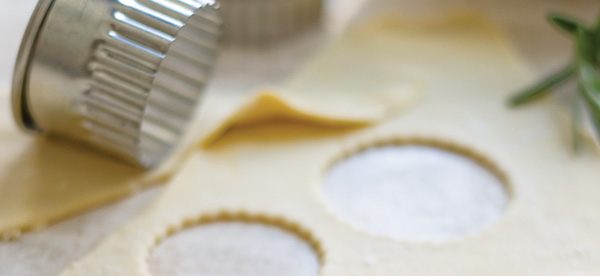
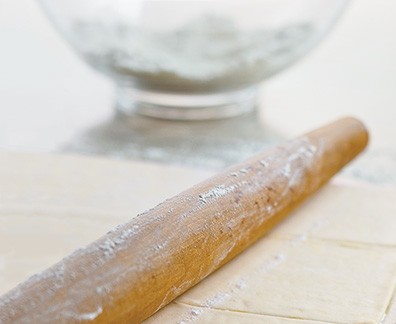
That moment when your little girl is cracking up while holding a fistful of Goldfish® crackers. That smell of cinnamon raisin toast in the morning as the family scurries around at the start of the day. Those little snippets of life that you let us be a part of—that’s the good stuff. And that’s why we’ll keep baking for generations to come.
— Margaret Rudkin, Pepperidge Farm founder“Pepperidge Farm started in my home kitchen with just one idea: producing a top quality food product.”

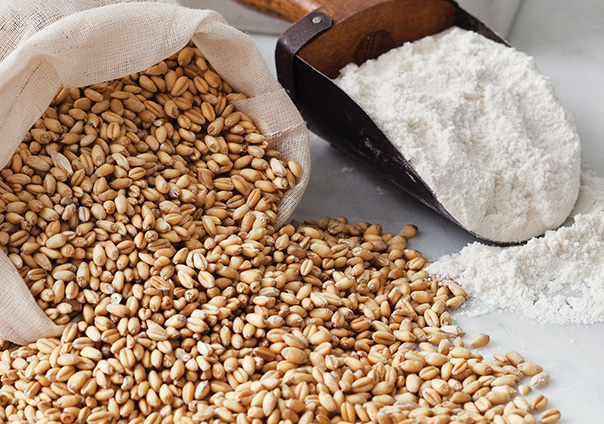
Pepperidge Farm founder Margaret Rudkin was one of the great business leaders of her time. She was born Margaret Fogarty in New York City in 1897, the oldest of five children in a second-generation Irish family. A striking young woman with bright red hair and green eyes, Margaret graduated valedictorian of her high school class, and then spent nine years working in New York before marrying Wall Street Broker Henry Rudkin in 1923.
Fourteen years later, Margaret was a 40-year-old-mother of three young sons, living in Fairfield, Connecticut on a beautiful property called Pepperidge Farm—named for an ancient Pepperidge tree that grew there.
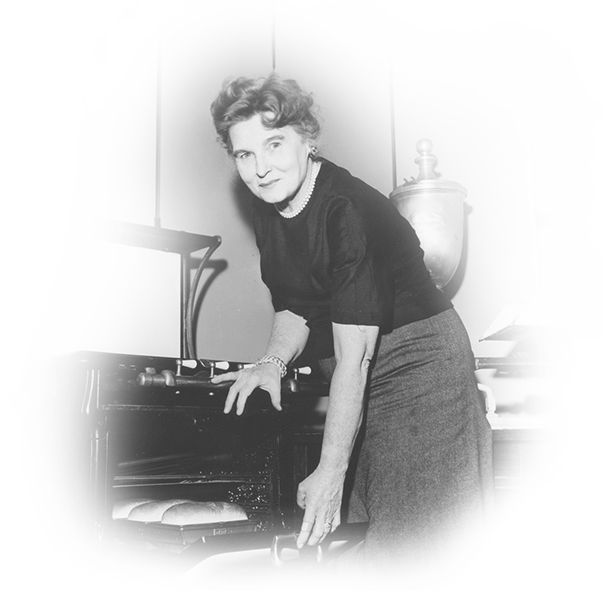
The Rudkins had moved into Pepperidge Farm in 1929—the same year as the great Stock Market Crash. The Rudkins faced many challenges during the Great Depression—but as parents, one of the most difficult challenges was dealing with the severe allergies and asthma of their youngest son, whose condition made him unable to eat most commercially processed foods. Based on the advice of a specialist, Margaret put him on a diet of fruits and vegetables and minimally processed foods.
Then one day Margaret decided to try baking him some all-natural stone ground whole wheat bread with vitamins and nutrients intact. At a time when puffy, aerated white bread dominated the market, many skeptics—including her son’s doctor—didn’t think it was possible to bake nutritious bread that was also delicious. Margaret proved them wrong...
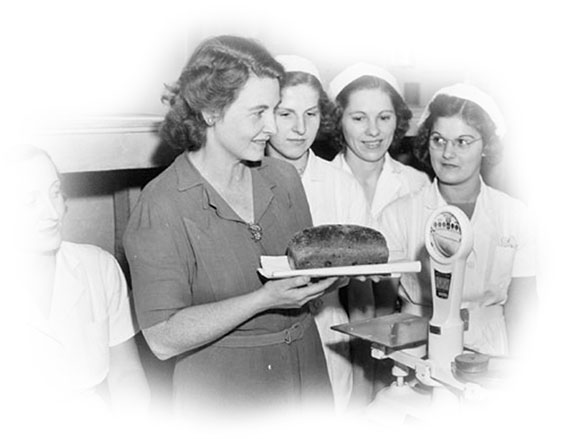
Having never baked bread before in her life, Margaret’s early progress was slow. "My first loaf should have been sent to the Smithsonian Institution as a sample of Stone Age bread, for it was hard as a rock and about one-inch-high," Margaret quipped. "So I started over again, and after a few more efforts by trial and error, we achieved what seemed like good bread."
Margaret's bread was much more than "good"—it was the best bread her family and friends ever had. Her son loved it, and it helped his health so much that his doctor actually "prescribed" it to many of his patients. Dr. Donaldson even endorsed her bread saying, "When Mrs. Rudkin makes bread, she makes bread—the finest bread the world has ever known."
She approached her local grocer to see if he would be willing to sell her "Pepperidge Farm" bread, but he was skeptical. Not only was Margaret new to the grocery trade, but she had the cheek to insist that her premium bread be sold for 25 cents a loaf to cover her costs– even though the going price for bread was 10 cents.
To convince the reluctant grocer, Margaret sliced up her savory bread and gave him a taste. In an instant, the sale was hers. The grocer not only took all the loaves that she brought, but by the time she arrived back home, he had left a phone message asking for more. "Although I knew nothing of manufacturing, of marketing, of pricing or of making bread in quantities, with that phone call, Pepperidge Farm bread was born," Margaret later said.
Henry Rudkin began carrying Margaret’s bread with him on the train to Grand Central Terminal to be sold at specialty shops in New York City. And as word about the extraordinary product got around, the tiny company grew. It had no business model, no strategic plan. Margaret just baked the bread by hand in her kitchen, making sure that every loaf was as good as it could be.
In 1939, Pepperidge Farm celebrated the production of its 500,000th loaf of bread. Six months later, production soared to one million loaves. Then, Readers Digest published an article called "Bread Deluxe" and told Margaret's story to the world. Demand for Pepperidge Farm products caught fire, and production had to shift into high gear. The Christian Science Monitor noted, "In response to this growing demand, Margaret Rudkin pushed her vivid red hair back from a perspiring brow and said she had always known the people of the United States wanted homemade bread -- but did they all have to have it at once?"
Margaret's operation quickly outgrew her kitchen and moved to her garage where the business thrived from 1937 to 1940. When the business moved into its first real factory in 1940, Margaret only intended to stay there for a year while planning to build a new bakery but World War II put that plan on hold.
In fact the war caused Margaret to actually cut production because she refused to make substitutions for top-quality ingredients, like real butter, 100% stone-ground whole wheat and honey, that were in short supply. But by the time peace came in 1945, she had a plan in hand to fulfill her dream of building a modern commercial bakery. On July 4, 1947, Pepperidge Farm celebrated Independence Day by cutting the ribbon on a new state-of-the-art bakery in Norwalk, Connecticut.
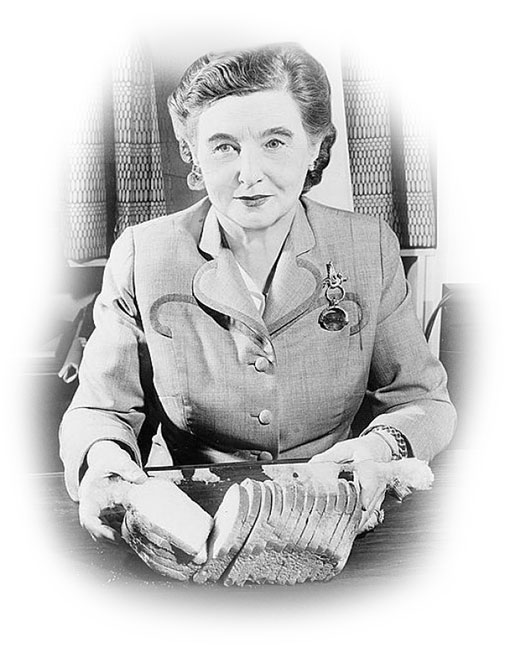
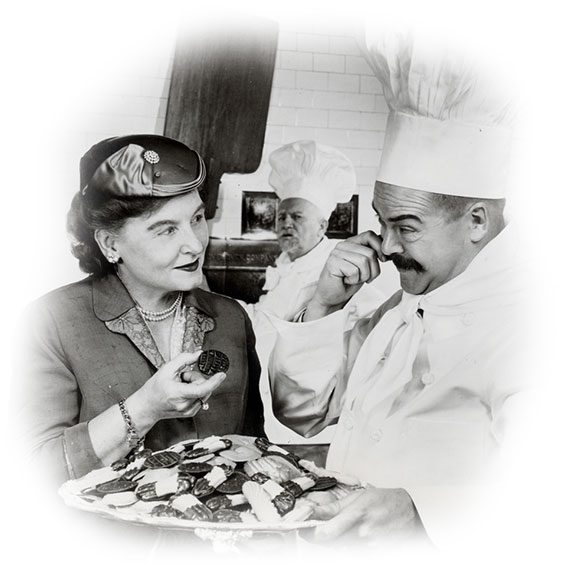
With streamlined production in place, the business thrived. While most of the bread-making process was automated by now, employees still kneaded the bread by hand because Margaret knew that's what top quality bread required.
During the 1950s, the Rudkins often traveled to Europe. On a visit to Belgium, Margaret became captivated by a unique collection of fancy chocolate cookies produced by the purveyors to the Belgian Royal House. Knowing the distinctive treats had no counterpart in the U.S., and convinced that other Americans would love them as much as she, Margaret bought the rights to produce and sell the delicate biscuits under the banner of Pepperidge Farm. Half a century later, our Distinctive Cookies, including Milano®, Brussels®, and Bordeaux®—are still some of our most popular products.
In 1956 an ad campaign introduced the character "Titus Moody," a down-home Pepperidge Farm deliveryman complete with horse and wagon. These legendary spots ran for almost 40 years, featured two different actors, and became one of the longest running campaigns in TV history.
Soon after, Margaret plunged again, buying the Black Horse Pastry Company of Keene, New Hampshire. At a time when Americans were only starting to use freezers, she foresaw that homemakers would love a frozen pastry that let them easily make company-special dishes at home. Pepperidge Farm Turnovers and a host of other frozen offerings followed. One of the most successful additions was Puff Pastry, a favorite of consumers and caterers alike, as it enabled even the most inexperienced cooks to create their own masterpieces. And today, frozen products like our classic 3-Layer Cakes and Texas Toast comprise 20 percent of our line.
The next European discovery came in Switzerland in the 1960s. The Rudkins discovered a unique little fish-shaped cracker that Margaret knew would be another winning addition for Pepperidge Farm. And of course, the rest is history. Irresistible Goldfish® crackers soon took America by storm, and they remain one of our leading icon products today.
In 1961, Margaret decided to sell Pepperidge Farm to another family-run food company, Campbell Soup. As a result, Margaret became the first woman to serve on the Campbell Soup Board.
At an age when many people would be settling into retirement, the unstoppable Margaret kept on. The Margaret Rudkin Pepperidge Farm Cookbook was published in 1963 and contained a combination of her favorite recipes and memoirs through the years.
The "fairy tale," as Margaret liked to call Pepperidge Farm, became the passion of her life. Over the 26 years since she started Pepperidge Farm in her kitchen, the average annual growth rate for the Company was 53 percent! She had turned a single loaf of bread into a huge, multi-category enterprise. She was a bestselling author and renowned industry leader. She frequently lectured at Harvard and other business schools in the U.S. and Europe. And when asked what made her company so successful, her answer was always the same:
"My explanation for our extraordinary growth is that Pepperidge Farm products are the best of their kind in the world."
It's a commitment that Pepperidge Farm people are still passionate about today.
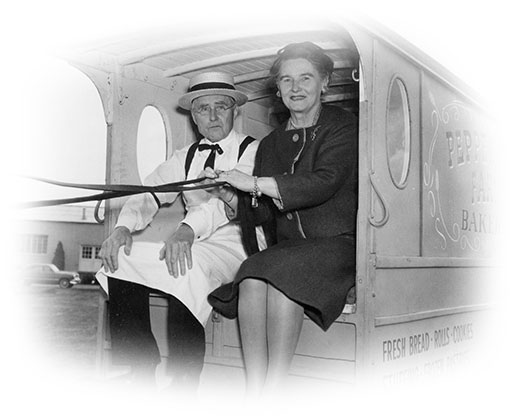
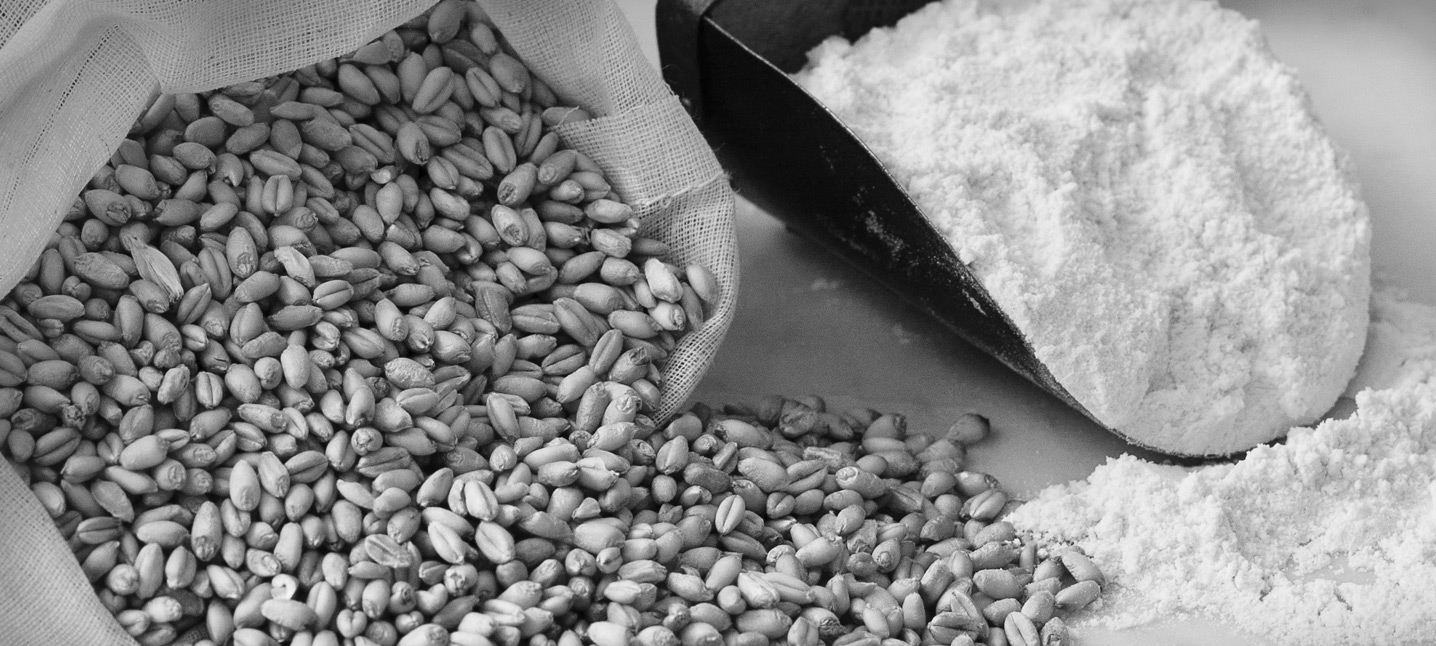
After World War II, and its associated shortages and rationing ended, Margaret Rudkin's plans for expanded bakery production could finally be realized. On July 4, 1947 her dream came true...
After World War II, and its associated shortages and rationing ended, Margaret Rudkin's plans for expanded bakery production could finally be realized. On July 4, 1947 her dream came true with the opening of the company's first modern bakery in Norwalk, Connecticut. New products such as dinner rolls, stuffing, and oatmeal breads are developed and tested, with Mrs. Rudkin always taking the first bite. Mrs. Rudkin clung tenaciously to her principles of quality -- a tradition that continues today.
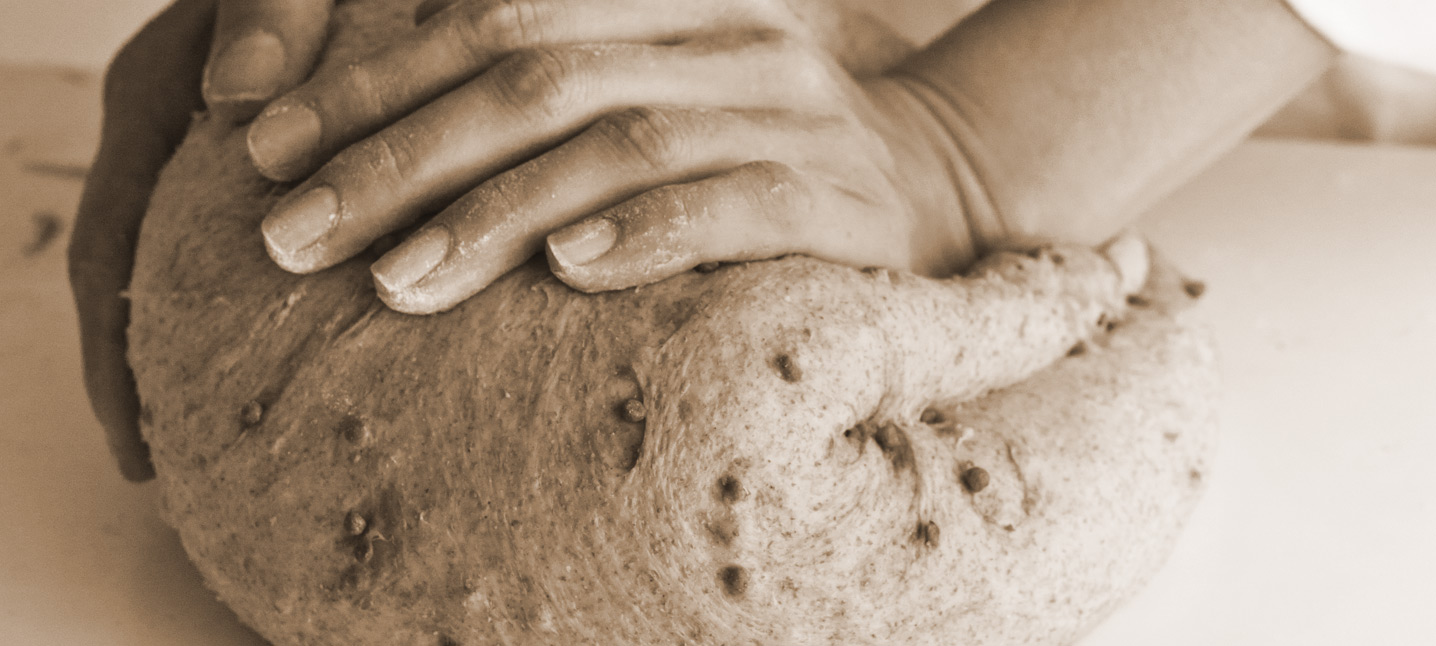
Pepperidge Farm's first television ad airs with founder Margaret Rudkin as spokesperson. Eventually, the Pepperidge Farm's country gentleman in the horse and wagon replaces her in a successful ad campaign...
Pepperidge Farm's first television ad airs with founder Margaret Rudkin as spokesperson. Eventually, the Pepperidge Farm's country gentleman in the horse and wagon replaces her in a successful ad campaign that spans five decades.
During a trip to Belgium, Margaret Rudkin discovers delicious and delicate cookies produced by the Delacre Company in Brussels. Pepperidge Farm reaches an agreement with Delacre to produce these elegant cookies in America. In 1955, Pepperidge Farm launches its Distinctive line of European-style cookies with evocative names such as Bordeaux®, Geneva® and Brussels®.
Pepperidge Farm moves into the frozen food business with the acquisition of the Black Horse Pastry Company, manufacturers of delicate and flaky homemade frozen pastries.
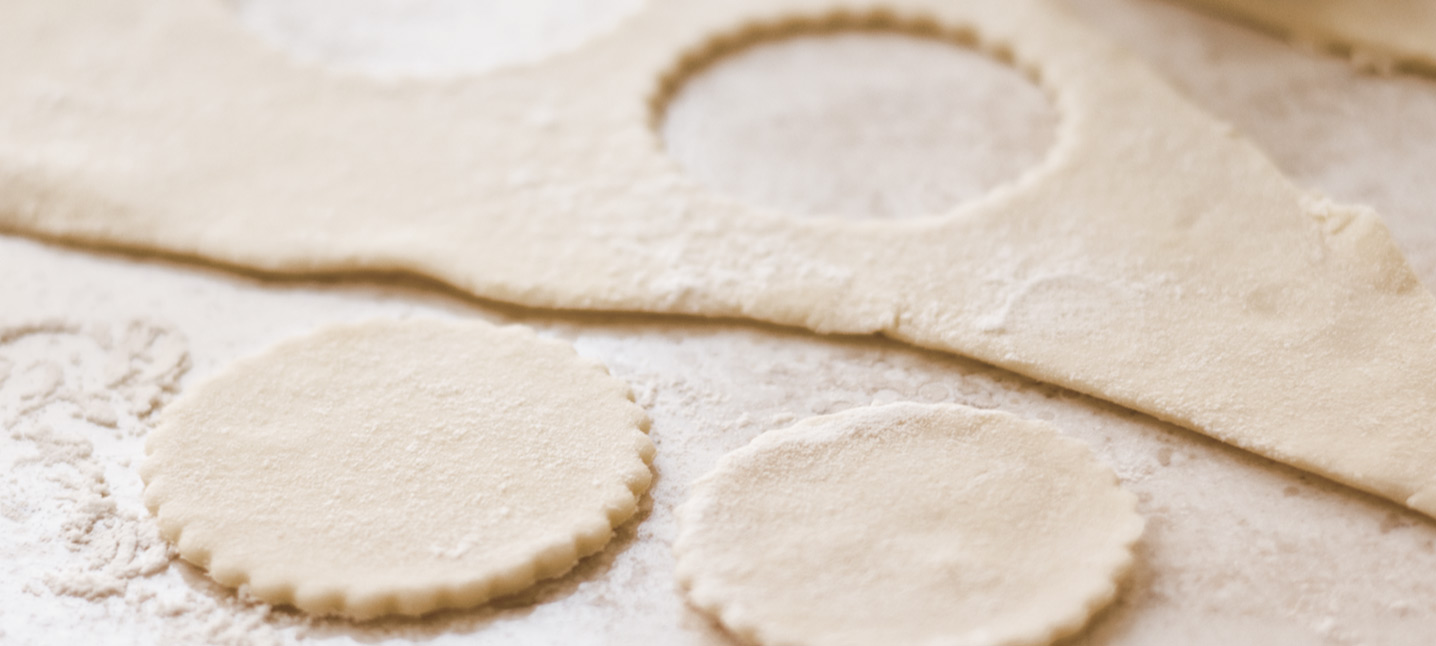
Campbell Soup Company, one of the largest and most highly respected food companies in North America, acquires Pepperidge Farm in 1961. America gets its first taste of Goldfish® crackers in...
Campbell Soup Company, one of the largest and most highly respected food companies in North America, acquires Pepperidge Farm in 1961.
America gets its first taste of Goldfish® crackers in 1962. Margaret Rudkin discovers the snack cracker on a trip to Switzerland and returns with the recipe.
The Margaret Rudkin Pepperidge Farm Cookbook becomes the first cookbook to chart on The New York Times Bestseller List in 1963.
Margaret Rudkin officially retires from Pepperidge Farm in 1966.
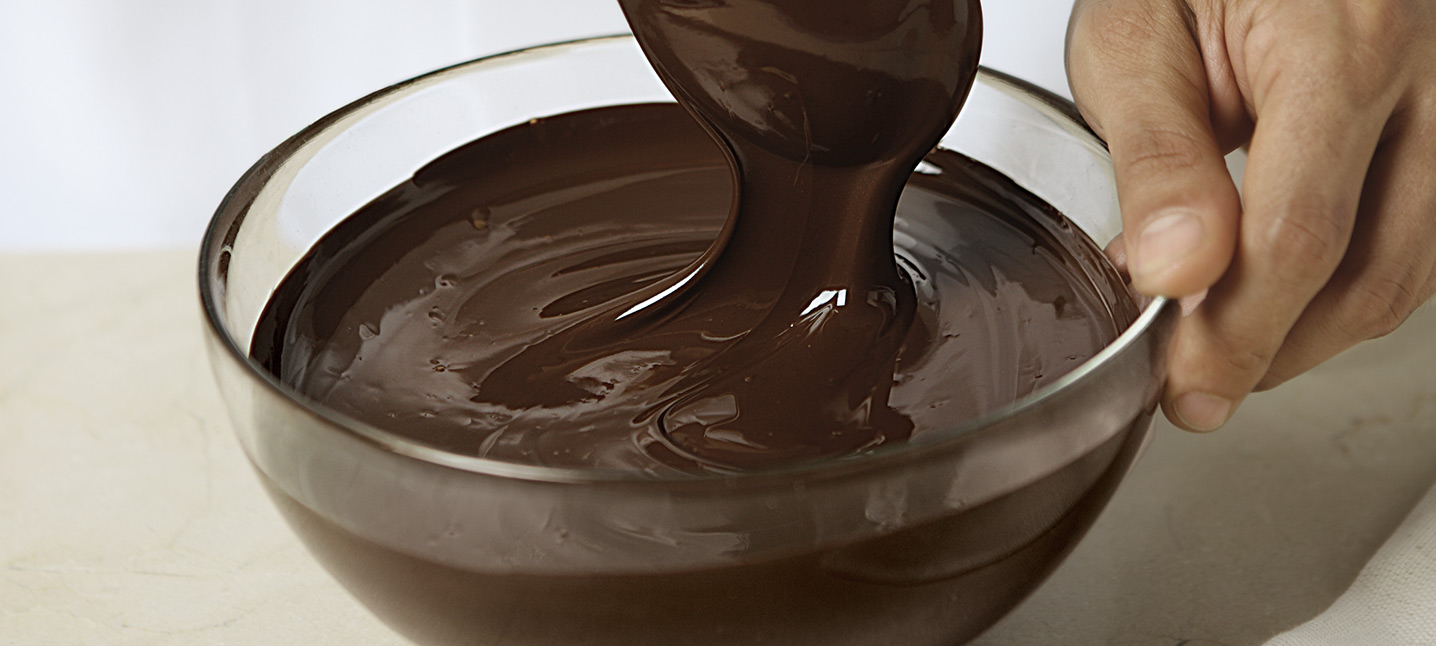
Pepperidge Farm builds more plants around the country to meet the growing demand for its premium products. In the 1970s, Pepperidge Farm bread travels aboard the Apollo 13 and Apollo...
Pepperidge Farm builds more plants around the country to meet the growing demand for its premium products.
In the 1970s, Pepperidge Farm bread travels aboard the Apollo 13 and Apollo 14 space flights.
Nostalgic "Pepperidge Farm Remembers" ads run on television, radio, and in print throughout this time period.
Goldfish® crackers advertising makes its television debut in 1977.

The American Collection™, now known as Chocolate Chunk Big Cookies, join our popular Distinctive and Old Fashioned cookies in supermarkets in 1986. Goldfish® snack crackers blast into space onboard the...
The American Collection™, now known as Chocolate Chunk Big Cookies, join our popular Distinctive and Old Fashioned cookies in supermarkets in 1986.
Goldfish® snack crackers blast into space onboard the Space Shuttle Discovery in 1988.
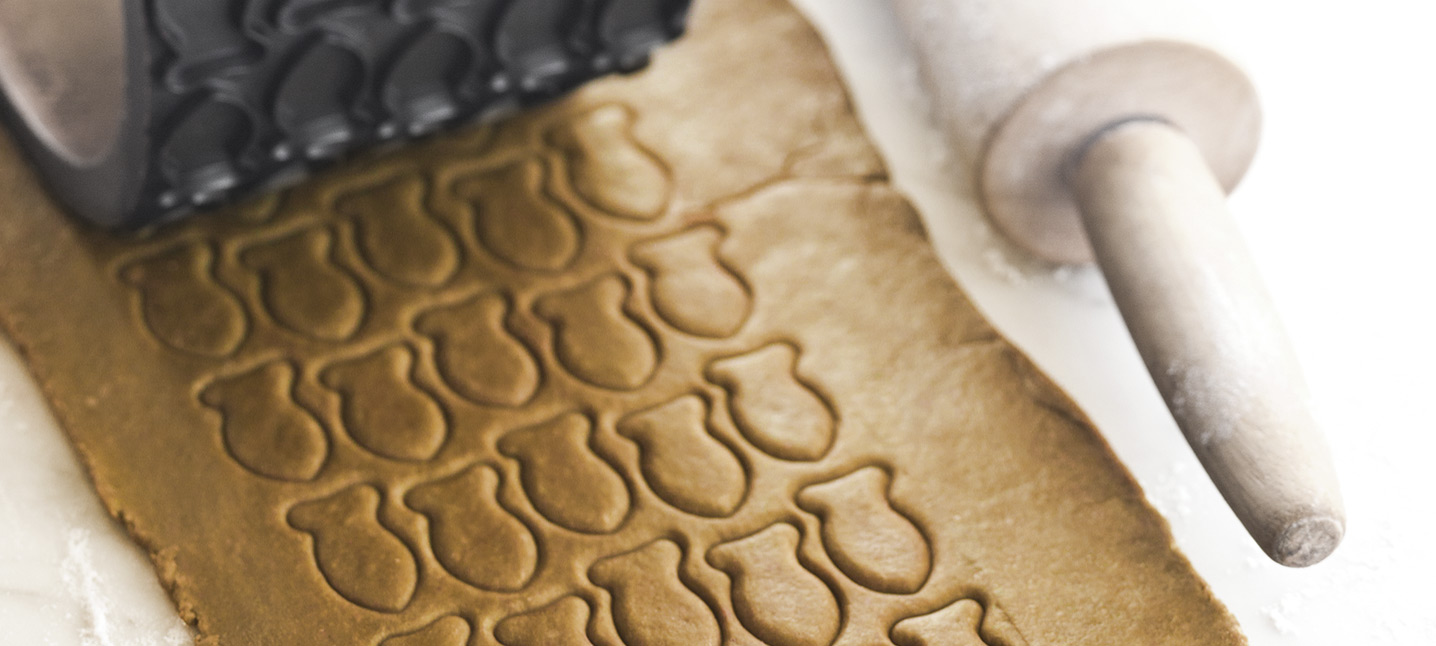
Goldfish® crackers become "The Snack That Smiles Back®" with the introduction of "Smiley" in 1997. This marks the first-ever alteration to our icon product since it launched in 1962. Offering...
Goldfish® crackers become "The Snack That Smiles Back®" with the introduction of "Smiley" in 1997. This marks the first-ever alteration to our icon product since it launched in 1962.
Offering frozen convenience, but homemade taste, Pepperidge Farm introduces its own flaky Pot Pies and hearty Texas Toast.
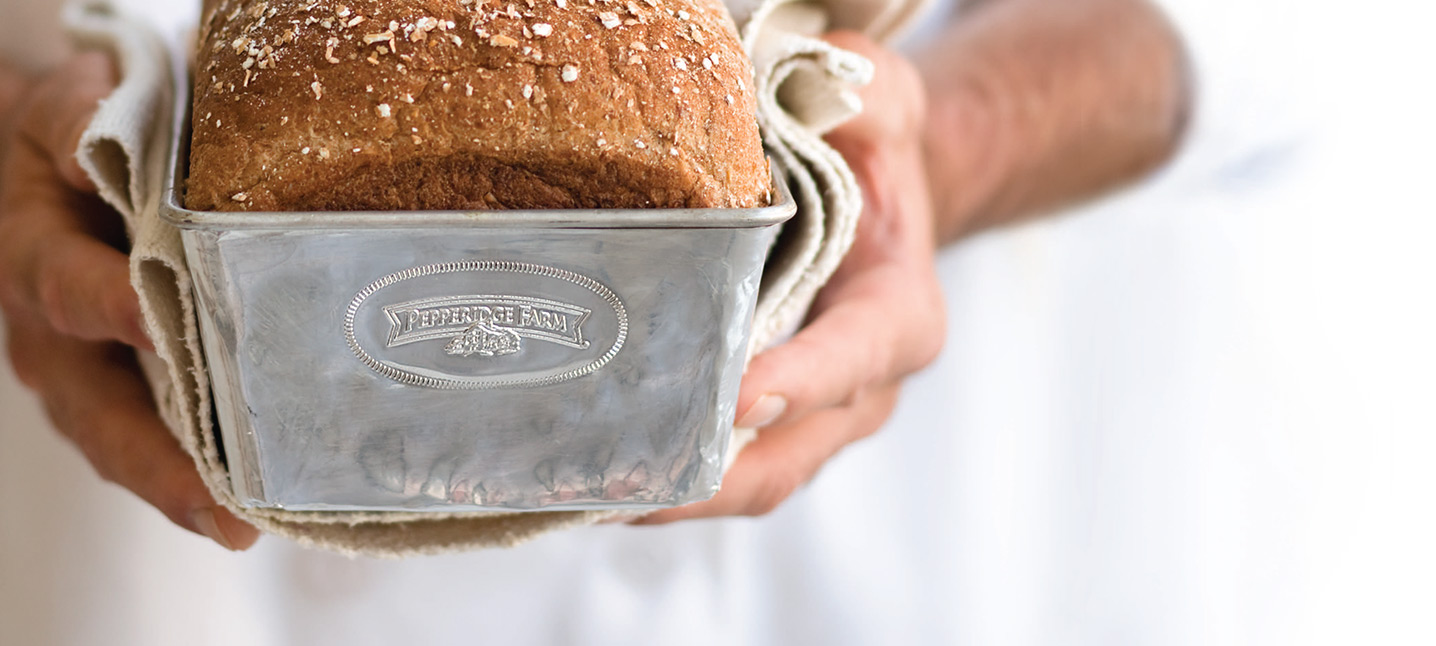
Pepperidge Farm, Incorporated exceeded $1 billion in sales in 2001 and ranks in the top 2 percent of brands worldwide in brand equity. From our beginning in Margaret Rudkin's kitchen...
Pepperidge Farm, Incorporated exceeded $1 billion in sales in 2001 and ranks in the top 2 percent of brands worldwide in brand equity.
From our beginning in Margaret Rudkin's kitchen in 1937 to today, Pepperidge Farm has changed a great deal, but one thing has never changed, our commitment to quality. It's a tradition that began with our entrepreneurial founder, and proudly continues to this day.
Get the latest news and announcements from pepperidge farm.
Visit Newsroom